Honey badgers, also known as ratels, are wonderful little creatures that do not deserve their reputation as nasty or ferocious.
They look cute. But don’t let their facade fool you. One of the fun facts about honey badgers is that they are known to attack lions. So when you see a cuddly little animal with a bushy tail, don’t tempt its fighting spirit.
Still, you shouldn’t be scared of these animals, they are only defending themselves in the face of danger! What would you do when faced by lions?
Learn more as we give you 21 fun facts about honey badgers, one of Africa’s most incredible and misunderstood animals.
1. Honey badgers are not actually badgers
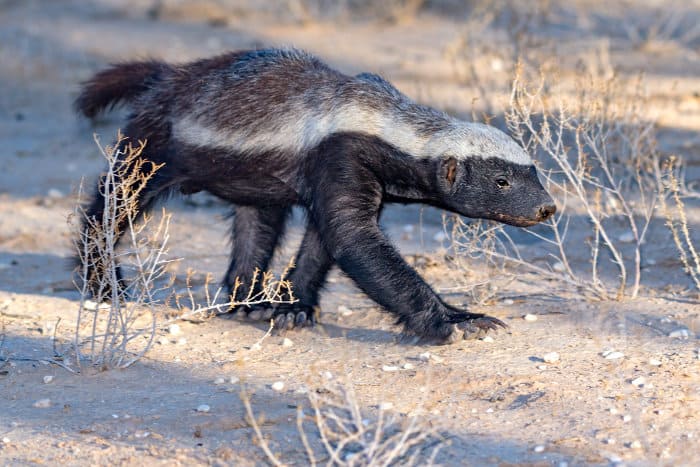
18th and 19th-century taxonomists have a lot to answer for. They named the Philippine flying lemur, an animal that is not a lemur and doesn’t even fly. And they named the honey badger, an animal that isn’t even a badger.
They don’t even really resemble badgers. In appearance they are more like an overgrown weasel, just with a really cute tail and an adorable little face.
2. The only Mellivora in the world
Their real name is Mellivora capensis. For those who didn’t graduate from Latin class (does anyone?), that translates as “honey eater of the Cape.”
This makes them the only animal in the Mellivorinae genus, which in turn is a subfamily of the Mustelinae genus.
Want to know another Mustelinae? The wolverine. That can give you an idea of where honey badgers get their fierce reputation from. They are not badgers, but related to one of the most mystical and dangerous of all living creatures.
3. Twelve honey badger subspecies that don’t make any sense
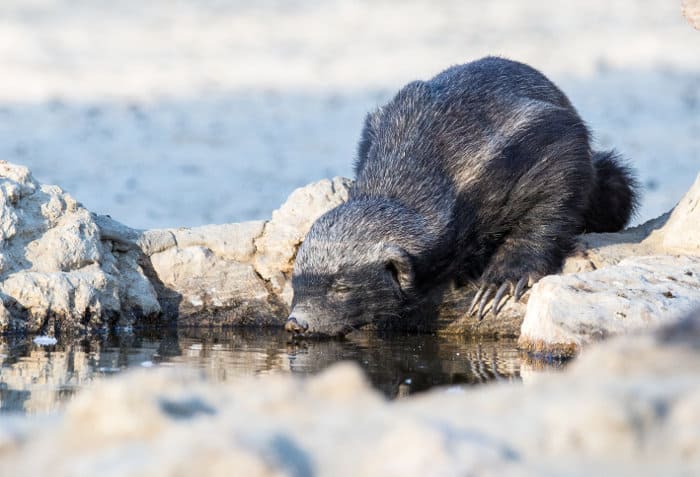
To confuse matters even further, there are 12 honey badger subspecies. All of these have mellivora capensis in their name, but only one actually inhabits the Cape.
There is mellivora capensis buechneri, a honey badger native to Turkmenistan.
Mellivora capensis leuconota is native to West Africa and goes by the name white-backed ratel.
Other species are native to places as diverse as Nepal, Iraq, Sierra Leone and the Congo.
4. A ratel that rattles
Most of the subspecies are not called honey badgers but ratels, and there are two explanations for this phrase.
Ratel means honeycomb in Dutch, which isn’t too distant from honey badger.
Ratel is also the word for rattle in Afrikaans, and when the honey badger chooses to fight it does so with a strong rattling sound.
5. Stronger than their size suggests
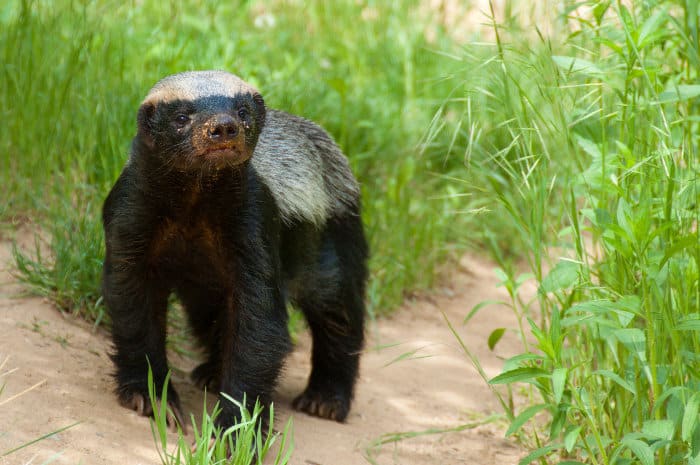
Glimpse a honey badger and you may think it is a large weasel. Get closer and there is serious power behind all that fur.
Mature male honey badgers weigh 10-15 kg and the females are a little lighter. They rise 25 cm off the ground and grow to 60-75 cm in length. Add on a bushy tail and this is not a small animal.
6. Four mammary glands on every female
Here is where these fun facts about honey badgers start getting interesting. As the only mellivora species they have developed some unusual adaptations.
Females have two pairs of breasts with nipples. This is helpful as they typically give birth to twins and both cubs can breastfeed at the same time.
7. A reversible anus that sprays stinky liquid
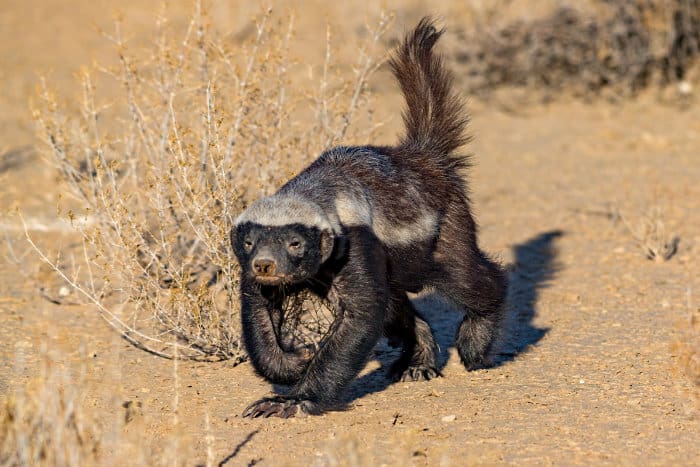
Honey badgers can turn their anus inside out and shoot a foul-smelling liquid that would make most people choke.
This kind of behaviour is similar to skunks. The scientific explanation is that an eversible anal pouch opens out and fires the pungent spray.
Why? Well, that is open to debate.
Some scientists say it is used as a defence against predators. Others believe that the liquid has a soporific affect on bees. Everybody agrees that the liquid is used to mark territory and impress rivals.
8. One of Africa’s most intelligent creatures
For such a small animal honey badgers have enormous brains. They are one of Africa’s cleverest creatures, capable of tricking their captors and escaping any man-made trap.
They are one of very few non-primates known to manufacture and use tools. For example, they will roll fallen tree branches into position so they can climb to a food source. If they can’t dig under an obstacle, they will build ladders to get over it.
Check out this incredible video showing how a honey badger escapes from multiple enclosures on a South African farm.
9. Specially adapted rubbery skin
Honey badger skin is 6 millimetres thick. That is thicker than almost all other animals. To provide some perspective, that is similar to the skin of Cape buffalo, an animal that weighs 50 times more than the honey badger.
This skin has a rubbery quality and is far larger than the animal. Essentially, the skin is like a set of loose fitting clothes that the animal can move around in.
Seriously! Honey badgers can turn and twist within their own skin. That’s not a fashion statement, it is a genius mode of self-defense.
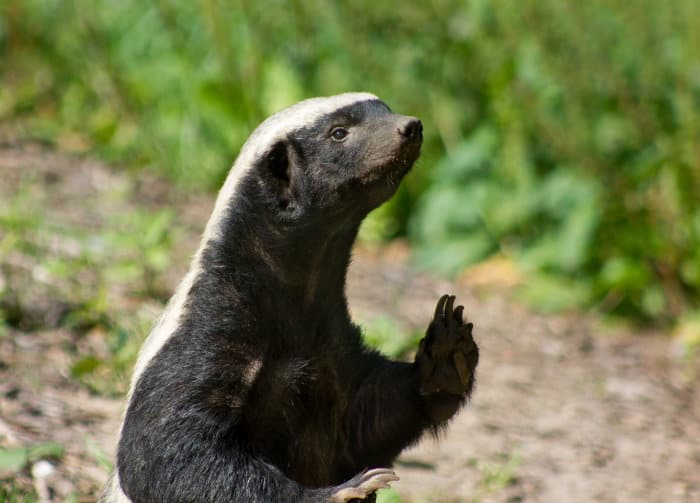
Thick skin can help any animal have their skin pierced. So it is a good defence against spears, arrows, bee stings, and the sharp teeth of small predators.
The key honey badger adaption is their ability to slither out of a predator’s grip. When a predator bites, the honey badger twists out of its skin, leaving the predator with nothing but a mouthful of rubbery epidermis.
At the same moment, Mellivora capensis twists around and takes a mean bite or swipe at its attacker. How is that for a fun honey badger fact?
10. An animal that attacks when hunted
There is a common belief that only the big five African animals attack their hunters.
That’s why the big five became known.
They were the most dangerous to hunt as they also hunted the hunters.
For example, check out this story about the Cape buffalo, an animal known to preempt attacks and charge potential hunters.
But more than just five African animals attack back. Honey badgers do not back down, even in the face of lions and leopards.
They use their sharp digging claws to injure opponents and they know where to aim. Swipes at male predators are usually focused on the testicles, while the females are attacked in the eye or underbelly.
11. Always stay clear of a honey badger’s fighting spirit
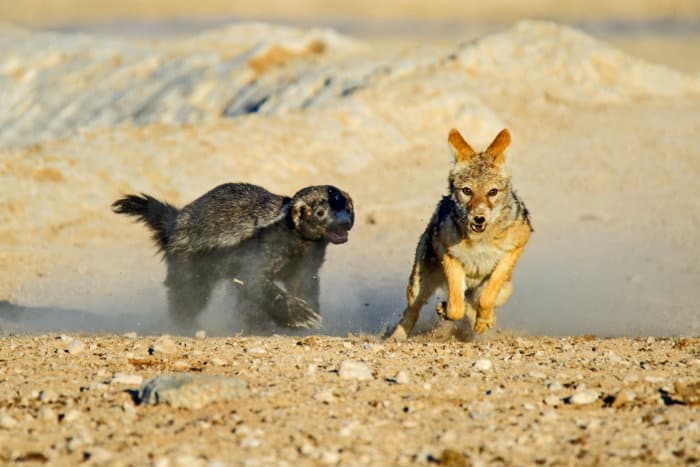
Without a “good pair of binoculars”, these animals can initially be mistaken for warthogs (also known as pumbaas). 😉 They are a similar size and scamper about close to the ground.
Warthogs have a nasty bite but will quickly run clear of zebra and antelope hooves. Honey badgers will summon their inner fighting spirit, especially when they want access to a waterhole.
They are known to scrap with kudu, bite buffalo, and fight back against any animal that gets in their way. Which is why you should never approach a honey badger! But hey, life on the African savannah is survival of the fittest!
12. Honey badgers love honey!
Okay, it sounds pretty obvious but it is worth stating. Honey badgers eat honey. That is why they need a means of placating the bees.
Just imagine a honey badger burrowing into your house and stealing all your honey! Scientists think they hypnotise or paralyse bees with their spray, thus preventing some nasty stings.
Bee larvae is their other favourite food, but don’t be fooled into thinking these animals are uninventive when it comes to dining. All that sweet honey is complemented by an incredibly wide range of other nutriments.
13. A cute partnership with honey birds
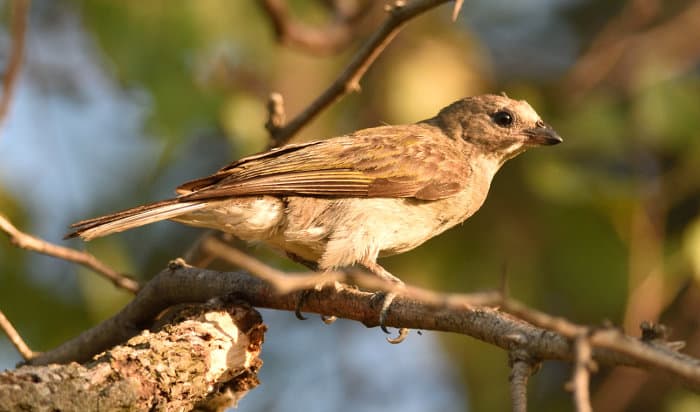
How do you find all that sweet honey? That’s easy for the honey badger. These clever animals follow the calls of honeyguides (also known as honey birds).
The birds locate beehives and shout out a location. Mellivora capensis breaks open the beehive and feasts on the honey, but always leaves a little bit behind.
Then the birds come to finish all the leftovers, notably the beeswax and larvae. Without the honey badger the honeyguide wouldn’t have the power to enter the hive.
14. Omnivores that will eat just about anything
Honey badgers are omnivores. Like hyenas they are not too picky about their food, especially when beehives are scarce.
Just imagine being a honey badger wandering about the Cape of Good Hope…
“Hmmm, there is a tasty snake…chomp chomp, not too bad, oh, here is a leftover springbok carcass, best eat it quick before I raid that bird’s nest on the cliffs…”
These little predators will eat mice, birds, rotting meat, flowers, fruits, and just about anything they can get their teeth into. They even eat snakes and are impervious to their venom.
15. Digging, digging, digging
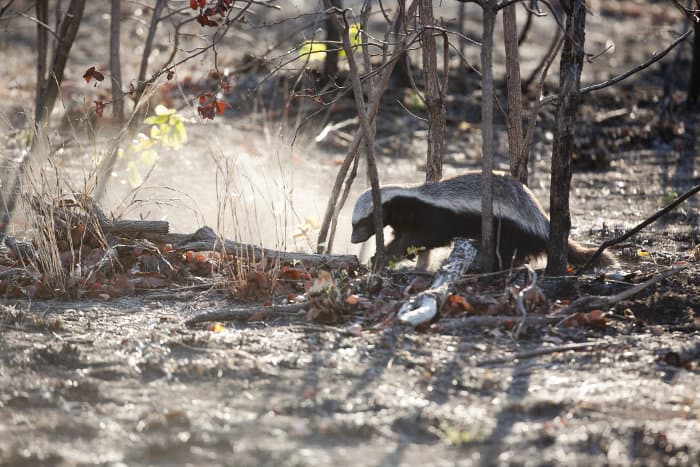
Digging is the favourite honey badger pastime.
They dig burrows to live in and maintain a network of underground channels to help them evade predators.
And it’s not just digging into the red soil of Africa. As well as digging into the ground they dig into termite mounds, tree trunks, concrete floors, and anywhere else they can make use of their long claws.
Digging is also a good way to capture prey. They listen to where termites and other insects are hiding, then launch a ferocious digging attack. This is a little similar to another underground hunter, the bat-eared fox.
16. Honey badgers are not always fearless, nor mean
According to the Guinness Book of World Records, honey badgers are the world’s most fearless creature. How they decided on such an accolade is unknown, as if there is some fearlessness scale that animals can be judged on.
The problem with being fearless is that it leads to being known as mean and aggressive. Despite their reputation, honey badgers are not mean nor nasty animals.
Yes, they will fight for their food. Yes, they will attack their predators. But wouldn’t you? Wouldn’t almost every other animal in the food chain?
Honey badgers are not nasty animals attacking anything in sight. They only attack to defend themselves, usually when they are surprised by predators, or when they must find a position at a busy waterhole.
17. Honey badgers just adapt to the situation.
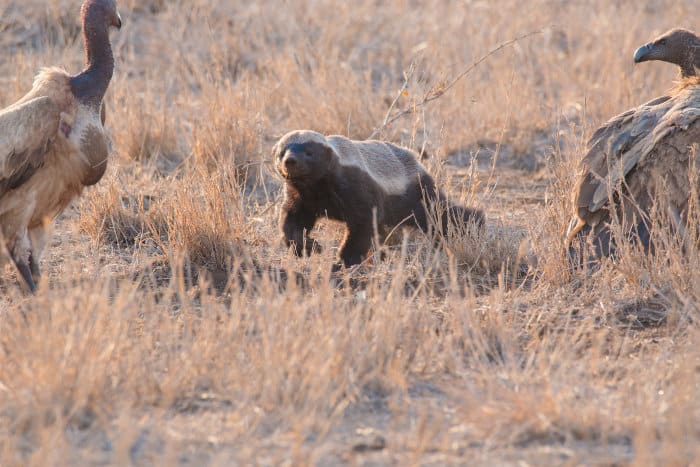
Turtles swim tens of thousands of kilometres so they can lay eggs in the place they were born.
Many bird and butterfly species take on enormous migrations between annual nesting sites on opposite sides of the world.
That kind of behaviour is not for the honey badger. Instead of sticking to their own dens, these animals will happily go sleep in another den.
And not just fellow honey badger dens. They will go to bed in a fox tunnel, mongoose den, aardvark hangout, or any other hole.
Some people interpret this as an example of mean or nasty behaviour. But really, it is just an example of being intelligent and adapting to the situation.
18. Honey badgers are solitary animals and avoid human contact
To the credit of their species, not much is really known about honey badger life and lifestyle. Some animals are easy to investigate and track, while others are just too smart and too elusive.
Honey badgers are solitary animals that spend most of the year on their own. They join up during mating season and sometimes hangout with a partner for a month before taking their own path once more.
Not only do honey badgers avoid others of their own kind, they skillfully avoid the attention of people as well.
Usually they are diurnal animals, meaning they are most active during the day. But in places with lots of humans they switch and become nocturnal, thereby avoiding attention.
19. Staying at home with mum
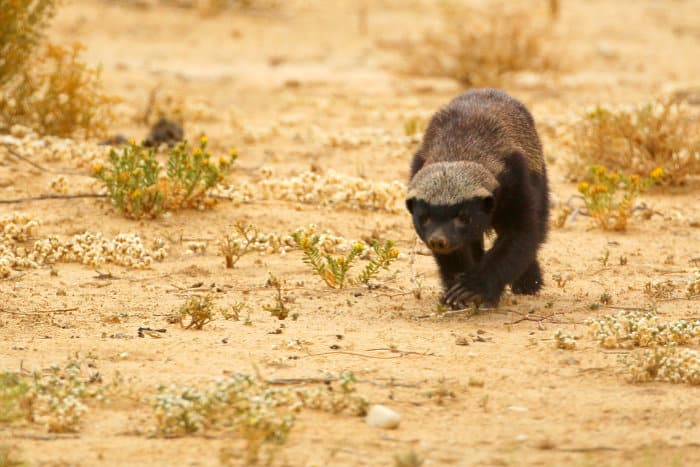
Despite their solitary nature, honey badgers do like a lot of motherly affection. There is no definitive age at which a youngster leaves home.
Some skip away as soon as they are capable of sourcing their own food. But other honey badgers are real mummy’s boys and stick around until they are bigger than their mothers!
20. Honey badgers are born blind
Perhaps that love for mum is due to how much attention they need at birth. Honey badgers are born without the ability to see. Newborns are completely hairless and can’t open their eyes.
Mothers must grab their offspring and carry them around in their mouth. Even in adult life they have poor eyesight, although this is compensated for by a keen sense of smell.
21. Encountering honey badgers in the wild
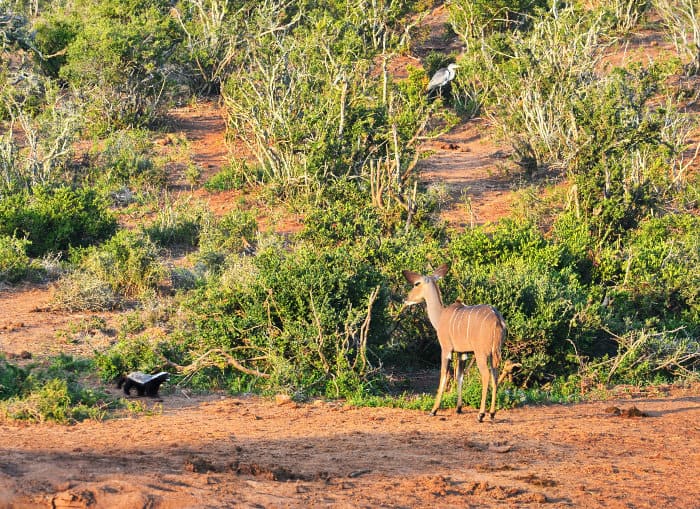
South Africa is a great place to see honey badgers in the wild. They occupy national parks and urban pastures all the way from Cape Town to Kruger.
Desert landscapes can be a good bet as well. Try Kgalagadi Transfrontier Park in South Africa and Botswana, or a Zimbabwe safari in Hwange National Park.
Further north you can enjoy regular honey badger sightings in Kenya’s Tsavo West and Tsavo East national parks.
Wherever you see a honey badger in the wild, remember that these are not mean or aggressive animals, but beautiful creatures that have been smart and strong enough to stay safe, in a world where so many species are disappearing.
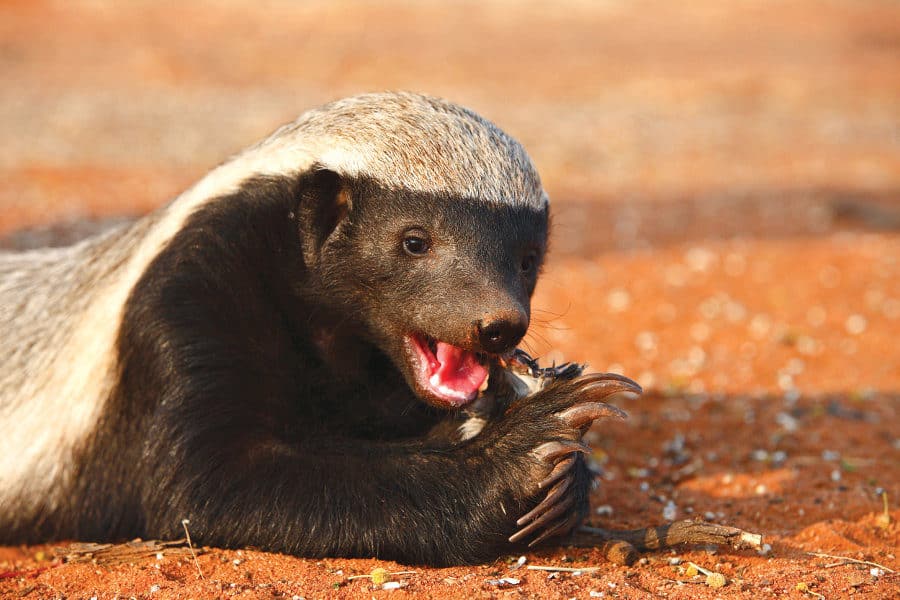
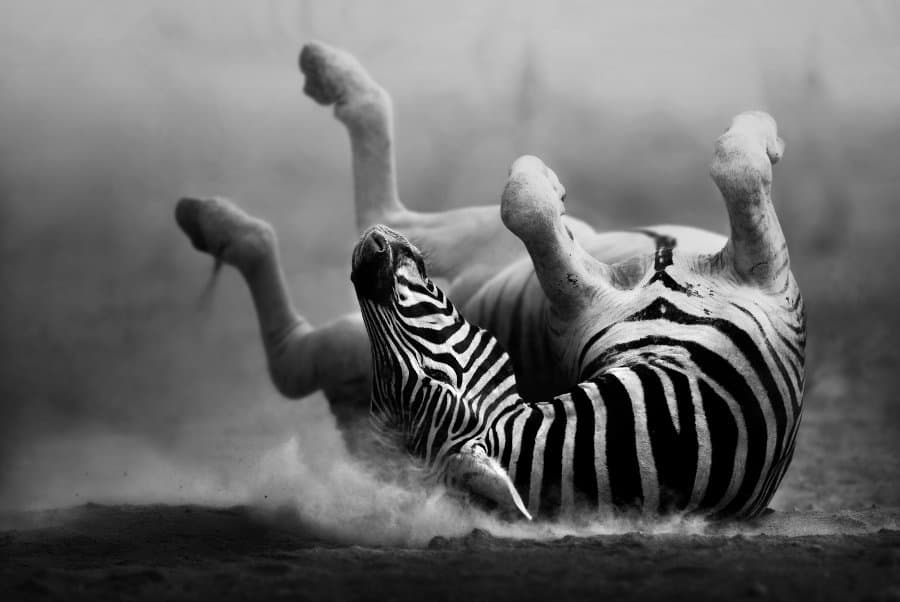
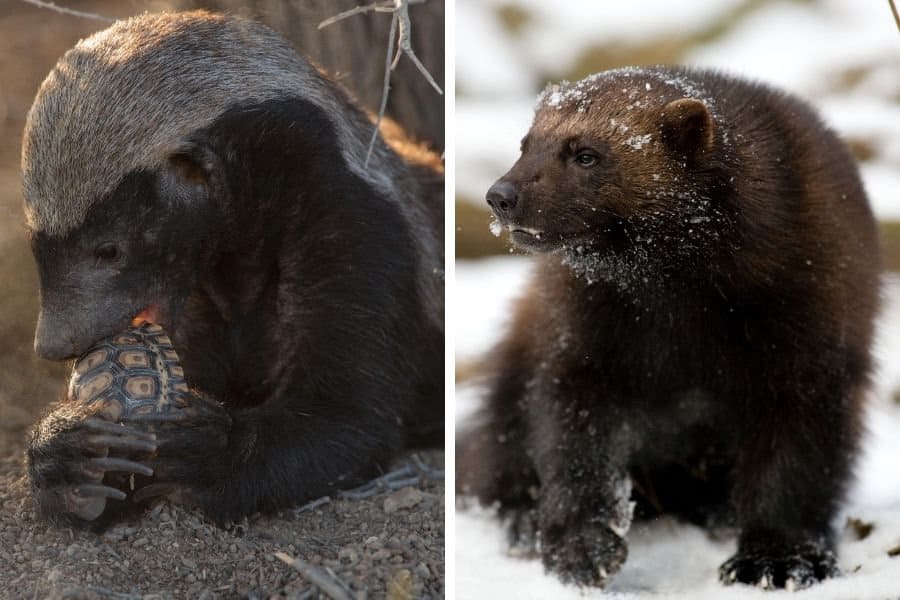
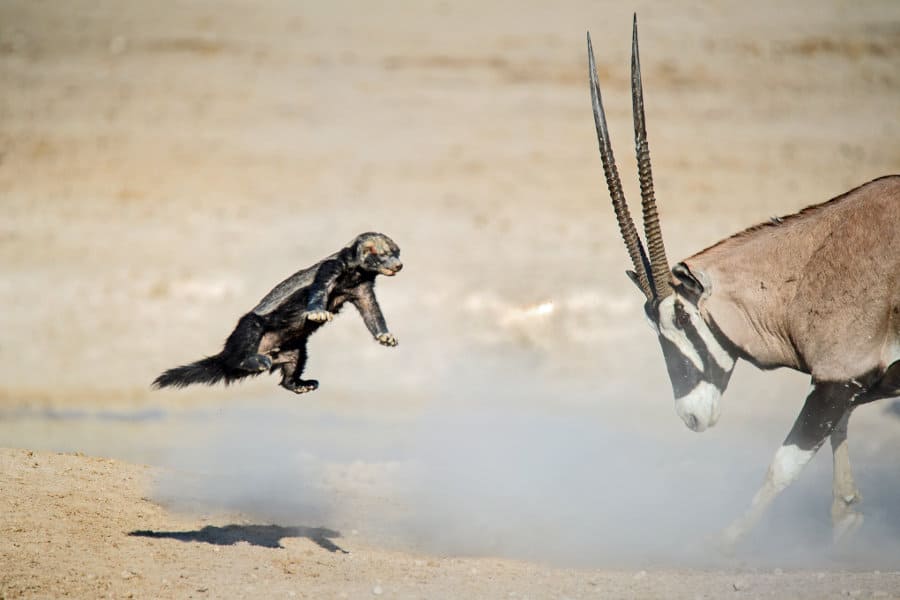
I do believe that Honey Badgers are completely bad-ass!!!